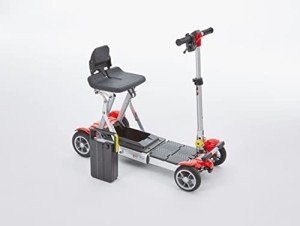7 Effective Tips To Make The The Most Of Your Mobility Aids
Understanding Mobility Aids: Enhancing Independence and Quality of Life
As society continues to age and individuals significantly seek ways to keep self-reliance, the demand for mobility aids has never been more pertinent. Mobility aids, which encompass a variety of devices developed to assist people with walking or moving, play a crucial function in promoting mobility, enhancing safety, and enhancing general lifestyle. This post will explore the numerous kinds of mobility aids, their benefits, considerations for choice, and answer some regularly asked questions.
Types of Mobility Aids
Various mobility aids are available, each created to address particular requirements. The following table summarizes a few of the most typical kinds of mobility aids and their features.
Type of Mobility Aid
Description
Best Suited For
Key Features
Walking canes
A portable stick offering support and balance.
Individuals who require very little support.
Light-weight, portable, adjustable height.
Walkers
Four-legged frames supplying stability.
Those requiring substantial support while walking.
Foldable, some with wheels, added security features.
Rollators
Wheeled walkers with a seat for resting.
Individuals requiring mobility with the choice to rest.
Brakes, baskets for individual items, adjustable height.
Wheelchairs
Chairs with wheels for people with limited mobility.
Those unable to stroll or requiring comprehensive support.
Manual or powered alternatives, adjustable seating.
Scooters
Motorized devices for larger ranges.
Individuals with restricted stamina however requiring self-reliance.
Different sizes and designs, often easily transportable.
Crutches
Assistance devices placed under the arms or lower arms.
Individuals recuperating from lower limb injuries.
Adjustable, lightweight, requires upper body strength.
Stairlifts
Mechanical devices for moving in between floorings.
Users dealing with obstacles in multi-level homes.
Personalized for different staircases, automated.
Advantages of Mobility Aids
Mobility aids provide an array of benefits that can significantly boost the lives of individuals dealing with mobility difficulties. Some significant advantages consist of:
Increased Independence: Mobility aids empower individuals to move freely without counting on others for assistance, consequently improving their confidence and self-confidence.
Boosted Safety: Using mobility aids can lower the danger of falls and injuries, especially for older adults or those with balance problems.
Enhanced Quality of Life: By facilitating mobility, people can take part in social activities, attend occasions, and enjoy life more fully, contributing to better emotional and psychological health.
Rehabilitation Support: After surgery or injury, mobility aids supply necessary assistance and stability, helping in healing and rehabilitation procedures.
Accessibility: Many mobility aids are designed to be utilized both inside your home and outdoors, making sure that individuals can browse various environments with ease.
Elements to Consider When Choosing Mobility Aids
Selecting the proper mobility aid needs mindful factor to consider of a number of elements, including:
Factor
Considerations
User's Needs
Assess the level of mobility required; think about whether the user needs temporary or long-term assistance.
Physical Limitations
Examine the user's strength, balance, and coordination to identify the best kind of aid.
Setting
Consider the main environments where the help will be utilized, such as home, outdoors, or particular surfaces.
Weight and Portability
Make sure that the picked gadget is manageable regarding transportability and storage, particularly for outdoor usage.
Budget
Mobility aids can be found in a range of prices; consider insurance coverage and readily available financing choices.
Adjustability
Choose aids that can be changed for height and comfort to accommodate growth or changing needs.
Regularly Asked Questions About Mobility Aids
1. How do I understand if I require a mobility aid?
Lots of aspects can indicate the need for a mobility help, such as problem strolling or balancing, fatigue while standing, or a recent surgery affecting mobility. Consulting with a health care expert can provide guidance customized to individual needs.
2. What types of mobility aids are covered by insurance coverage?
Protection differs in between insurance companies, however most provide choices for resilient medical devices, which typically includes wheelchairs, walkers, and some kinds of canes. Consult your insurance service provider for particular protection information.
3. Can mobility aids be used outdoors?
Yes, many contemporary mobility aids are created for outside use. Rollators, scooters, and some walkers are equipped with features for stability and ease of usage on numerous surface.
4. How do I maintain my mobility help?
Routine upkeep involves looking for any wear and tear, guaranteeing that parts such as wheels, brakes, and frames are working correctly, and cleaning up the equipment as required. Following the manufacturer's standards is crucial for safety.
5. Is there a risk of becoming dependent on mobility aids?
While some users may become reliant on mobility aids, they are developed to promote independence and mobility. Slowly using folding electric scooters for adults can enhance self-confidence and help keep physical strength and coordination.
Mobility aids are invaluable tools that empower people to overcome physical difficulties, promoting self-reliance and boosting quality of life. By understanding the various kinds of mobility aids available, their benefits, and essential aspects for consideration, families and caretakers can make informed choices that best meet the requirements of their liked ones. With the right support, those with mobility obstacles can lead fulfilling and active lives, complimentary to explore the world around them.
